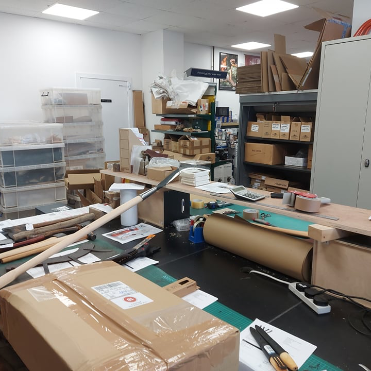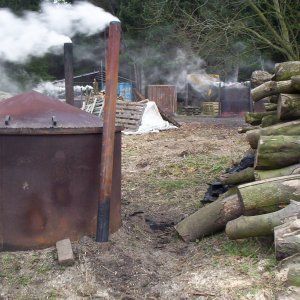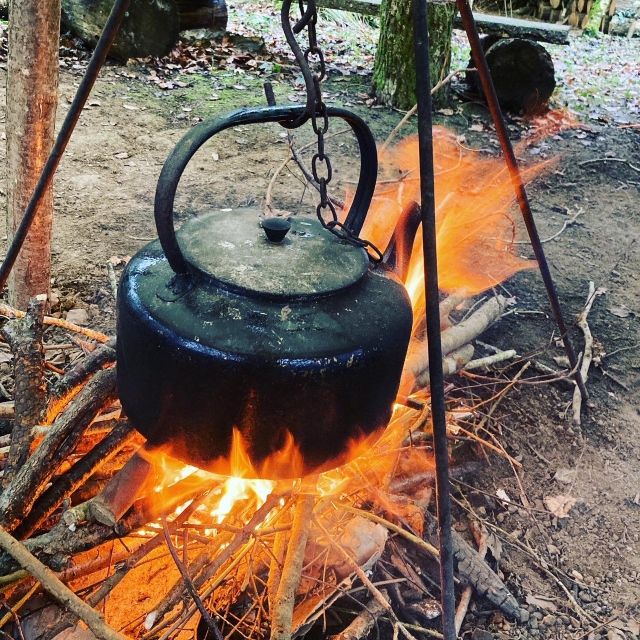Drawknives: Frequently Asked Questions
Also known as a drawing knife, draw shave or shaving knife, drawknives are a very traditional tool, used with two hands, so the work piece needs to be securely held by some form of vice, most commonly, a shave horse.
In green woodworking, the advantages of using a drawknife in conjunction with a shave horse is that the workpiece can be released, repositioned and reclamped quickly, and because your feet are in control of that process, both hands are free to draw the tool towards you. A very efficient human-tool device collaboration.
Drawknives are satisfying tools to use, the best ones are capable of removing both lots of stock quickly and small amounts slowly, to create, for example, accurately sized tenons for chair legs. In much the same way that an axe is fundamentally a very basic handle and sharpened steel union, a drawknife is an uncomplicated tool that gives a skilled user complete unhindered freedom to remove both large and small amounts of wood.
Of course, over hundreds of years many types and variations of drawknives have evolved for specific applications. Most work in slightly different, specialised ways, for example, the Gränsfors Bruk Swedish Drawknife is a large tool designed to refine the shape of logs in building projects, or for bark removal, and as such not a tool for working greenwood in general. It has a long doubly curved blade with a single bevel (c.30 degrees) used bevel up, with handles at each end that follow the curve of the blade ensuring that your hands don't get injured scraping on the log.
An all-round drawknife suitable for green woodworking is likely to have a cutting edge of 8-10" in length with a single bevel (c. 25 degrees). Handles are commonly at 90 degrees to the blade but occasionally 45 degrees. Handles can be on the same plane as the iron or at a slight angle which helps switching from using bevel up to bevel down.
What is the difference between a spokeshave and a drawknife?
Unlike a spokeshave (or a plane) a drawknife has no means of adjustment to control the size of the shavings produced, they are solely reliant on experience and skill!
Also unlike a spokeshave, wood shavings in a drawknife can't get jammed in the body. Drawknives (even small drawknives) have a long unfettered cutting edge, so there is the possibility to slice as you draw the blade towards you, which is always useful - especially when grain is not clean.
As a general rule, drawknives are for quick removal of lots of wood, and spokeshaves are for final stages where less wood removal is needed but with greater accuracy.
Should I choose a straight or a curved drawknife?
The majority of general duty drawknives have uncomplicated straight edges, so these will normally be the type to go for.
However, there are exceptions such as the Svante Djarv 270mm drawknife. The blade on this tool is slightly curved so occasionally used bevel-up when flattening the bottom of a wooden bowl and more commonly used bevel-down when rounding chair legs or billets for the pole lathe.
Which drawknives would Woodsmith recommend?
For those of you looking to purchase a drawknife of your own, we've narrowed down the search by highlighting some of Woodsmith's top picks:
If it is your first drawknife for general green woodworking then you can't ask for anything better than either the standard Ray Iles 8 1/2" Drawknife or the Ray Iles Mike Abbott Pattern Drawknife. Both of the aforementioned have very subtle visual differences, however the Ray Iles Mike Abbott Pattern Drawknife has the added benefit of handles that are cranked slightly down so it can be used bevel-up or bevel-down. They are both durable good quality UK made tools that won't break the bank.
However, the Ochsenkopf (Oxhead) Drawknife also has a lot to commend it and definitely worthy of inclusion in your research. A different design to the Ray Iles Drawknife, so it works in a different way. The handles are ‘dropped’ which means it's to be used bevel up most of the time.
The bevels are long so it's easier to maintain the correct angle when sharpening. Like many tools, the bevels are ground by the makers but will require a final hone before use to removing grinding marks; not a big job but before putting it into your basket on the website you can request that we do this for you so its ready for use out of the box. To protect the edge when not in use you can select either a Woodsmith leather or wooden sheath, then you’re ready to go! The 225mm cutting edge version is nearest in size to the Ray Iles Large Drawknife but there is also the slightly longer 250mm version if you regularly work with wider material.
For something very handmade and a little more special the Hans Karlsson Drawknife 205 or the longer Svante Djarv Drawknife 270mm are exceptional pieces of kit. Whilst both of these tools come in at a slightly higher price point, these hand forged tools are a delight to use and will deliver many years of excellent service.
Questions?
Thanks for taking the time to read, and should you have any questions regarding drawknives - please reach out to the Woodsmith team and we'll be more than happy to help! You can explore our full range of drawknives at woodsmith.co.uk/woodworking-tools/drawknives





